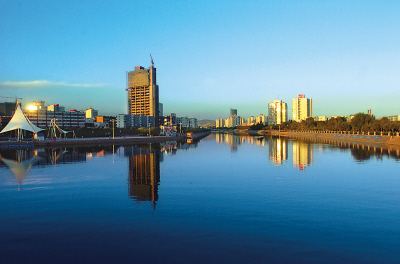Urbanization Process in Xinjiang
2 min read(1)1950-1957: National economic recovery and the First Five-Year Plan period, fast growth in urbanization The 8 years in this period saw stable development in both land farming and animal husbandry. The land reclamation, modern manufacturing and mining businesses as well as cultural and educational undertakings also advanced fast. While stepping up efforts on theurban development with Urumqi City as the focus, Xin jiang began to build the mining areas such as Shihezi New City and Karamay(including Dushanzi). Urban population in various prefectures and sub-regions increased at the same time. Urbanization was developing fast in Xinjiang. By 1957, the urban population in the entire autonomous region reached 940,700, up by 411,400 than 1949, representing a yearly net increase of 51,400 on average. The urban ratio of the population was 16.86%.

(2)1958-1965: The”Great Leap Forward”movement and National Economic Readjustment period, ups and downs in urbanization In those 8 years, first there was the “Great Leap Forward”movement under the “leftist” impact, resulting in bloated basic development and abnormal drastic rise of urban population. Urbanites in Xinjiang rocketed from 1.1437 million in 1958 to 1.8004 million in 1960, up by 286,600 people every year on average; and the urban population ratio rose from 19.64% in 1958 to 26.23% in 1960. After 1961, there was readjustment to the national economy, and the urban population was compressed forcefully. By 1965, the urban population ratio dropped to 16.95%.

(3)1966-1977: The”Cultural Revolution”period, stagnation in urbanization After the Three-Year National Economic Readjustment, all undertakings were brought back onto the normal track. But before long, the ten-year tumultuous “Cultural Revolution” wreaked havoc on the economy. During that period, the non-agricultural population growth in urban areas was just equal to the natural population growth in Xinjiang. The urban population ratio basically remained at the level of 1965.

(4)1978-now: New development period
Since 1978 when the policy of reform and opening-up was adopted, both agriculture andindustry in Xinjiang have experienced rapid development thanks to the reinvigoration efforts at home and opening-up abroad. The process of urbanization has quickened correspondingly, but still along the normal track and at the normal speed. The urban ratio of the population rose from 19.04% in 1975 to 26.36% in 1985, then further to 44.0% in 2012.








